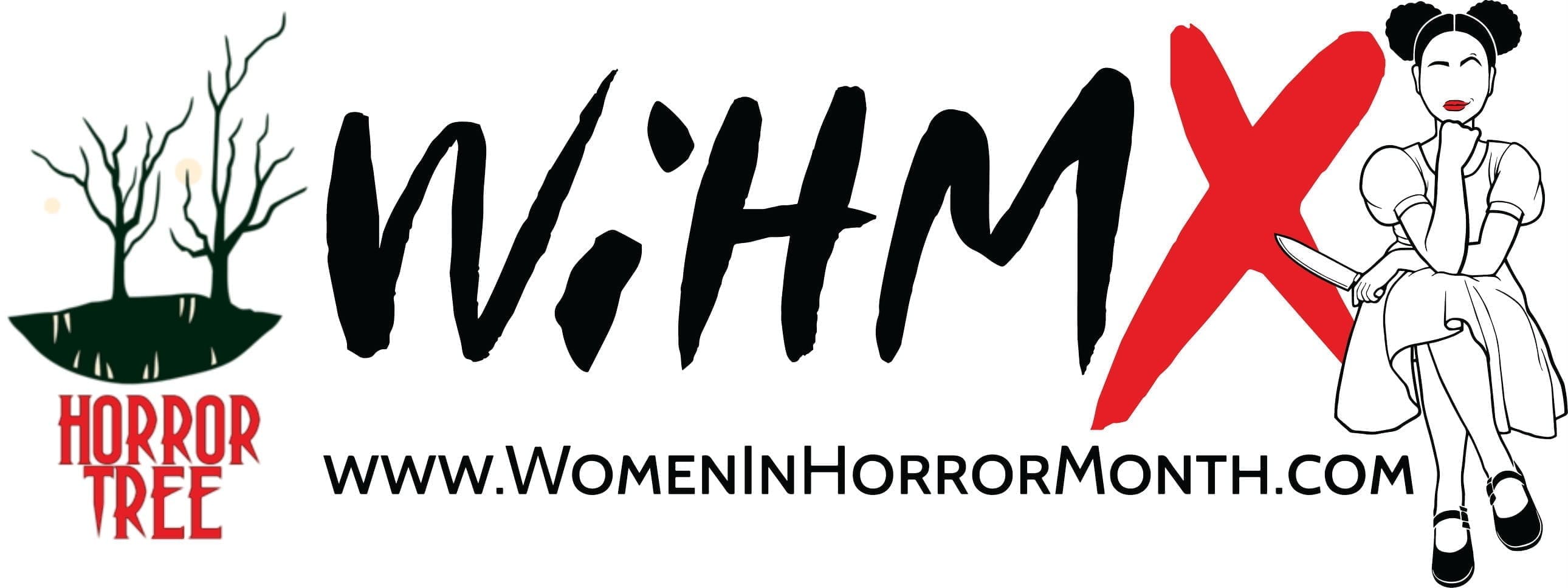WIHM: Plant Horror – Or That Impressive Hogweed Is NOT Harmless!

Plant Horror – Or That Impressive Hogweed Is NOT Harmless!
By E. A. Black
Most people don’t think of plants as particularly harmful. It’s not like they’re going to uproot themselves, chase you, and attack you. Oh, wait, I’ve seen that movie… J
In fact, nature is brutal. It’s not always nice and pretty. You may twirl around in your New Age clothing in the woods to be closer to nature, but nature is also watching you. And waiting to pounce.

Plant horror is an interesting and frightening horror genre. I’m an amateur gardener and I’ve seen my fair share of wicked plants. There are the commonly known ones like poison ivy, poison oak, poison sumac, and Venus flytraps, but some of the more obscure ones can scare the hell out of you. I live in Massachusetts where the giant hogweed reigns. It resembles a large Queen Anne’s lace and wild parsnip, but it is not harmless. This plant’s sap is highly toxic and causes blisters and scars. It’s so vicious it can blind you. Websites have advised if you see this plant to avoid it at all costs. Do NOT touch it!
Poison hemlock affects the respiratory muscles. This is the plant that Socrates chose to ingest when accused of impiety and corrupting young men of Athens.
Ingrid murdered her lover, Barry, in the book “White Oleander” when she discovered he was cheating on her. The poison she used included oleander sap. Symptoms of ingesting this sap include nausea, vomiting, excess salivation, abdominal pain, and diarrhea (may contain blood). There is also irregular heartbeat or racing heart that slows to a dangerous rate.
According to a Smithsonian article, scholar T. S. Miller wrote, “First, the traditional Western understanding of how the world works places plants at the bottom of a pyramid that contains all living things. In plant horror, they disrupt this seeming “natural order” by rising to the top as apex predators. Second, plants are at the bottom of the pyramid precisely because they are so very unlike humans. We can see ourselves in animals, even animals unlike us. But it’s much harder to see yourself in a rose bush, or even a Venus flytrap. They’re creatures from another world, a cellulose world, which is right next to us and which we depend on—but there’s no way to know what they might be thinking, or what, given the right circumstance, they might do.”
Books and movies that delve into plant horror include the following:
The Ruins – Travelers to Mexico discover nature run amok such as murderous vines that creep all over you (and inside you). Caustic sap burns their hands. The locals won’t let them leave the area because they’d carry the contagion into villages with them.
The Day of the Triffids – Triffids are large, venomous, carnivorous plants that can uproot themselves and chase you. Triffids pass on poison through stingers. The protagonist suspects these plants were bioengineered by the Russians, and now triffids are a worldwide threat.
Little Shop Of Horrors – Audrey II is a man-eating plant that not only talks but also breaks out in blooms with its victim’s faces inside. Influences may have been John Collier’s “Green Thoughts” and Arthur C. Clarke’s “The Reluctant Orchid”.
The Invasion of the Body Snatchers – Spores from outer space mimic humans in the form of gigantic seed pods that impersonate individual victims. The story starts with a doctor’s patients who suffer from Capgras delusion – the belief that their loved ones have been replaced by exact replicas. Determining who is human and who is a pod person provides much fear for this story. You’ll never look at sleep quite the same way again after watching or reading it.
The Happening – M. Night Shyamalan’s movie about mass suicides caused by toxic plants.
Rappaccini’s Daughter – Nathaniel Hawthorne’s classic short story about a man who watches his neighbor’s beautiful daughter Beatrice milling about in her father’s rare flowers garden. He is entranced, but the woman is not quite what she appears to be.
Other movies that include plant horror are “Creepshow”, “Attack of the Killer Tomatoes”, and “Doctor Terror’s House of Horrors”.
I’ve written a plant horror short story recently, and I’m looking for a home for it. This story includes vines I describe as “flapping their blooms open and shut making squicky sounds like pulling your foot out of mud. It was a nauseating, mushy kiss.” I based the vines on pumpkin blossoms, which are large, pulpy, orange, and very alien-looking. I strongly suspect that the author of “The Invasion of the Body Snatchers” has seen pumpkin blossoms. Those blooms in the movie look suspiciously like them.
Next spring, when you see the greenery sprout from the ground and the blossoms bloom and the sweet smell of the flowers greets you, remember that Lily of the Valley can cause heart palpitations and a small animal that drinks water a foxglove has been sitting in can die from it. The heart drug digitalis was originally derived from foxglove. Even your Christmas poinsettia is poisonous. Pleasant dreams!
E. A Black
 E. A Black had enjoyed telling scary stories to a captive audience since she was a child. She grew up in Baltimore, the home of Edgar Allan Poe who has inspired her to write. Due to her love for horror and dark fiction she joined Broad Universe, a networking group for women who write speculative fiction. Her short stories have appeared in Zippered Flesh 2, Zippered Flesh 3, Teeming Terrors, Midnight Movie Creature Feature 2, Wicked Tales: The Journal of the New England Horror Writers Vol. 3, Heart of Farkness, and more. She won a Best Short Story mention on The Solstice List@ 2017: The Best Of Horror for Invisible, which appears in Zippered Flesh 3. In addition to horror, she writes erotica and romance as Elizabeth Black. Friend her on Facebook and follow her on Twitter, where she posts as Elizabeth Black. Check out her web site at eablack-writer.blogspot.com. Sign up for her newsletter: http://eepurl.com/b76GWD She lives on the Massachusetts coast in Lovecraft country. The beaches often call to her, but she has yet to run into Cthulhu.
E. A Black had enjoyed telling scary stories to a captive audience since she was a child. She grew up in Baltimore, the home of Edgar Allan Poe who has inspired her to write. Due to her love for horror and dark fiction she joined Broad Universe, a networking group for women who write speculative fiction. Her short stories have appeared in Zippered Flesh 2, Zippered Flesh 3, Teeming Terrors, Midnight Movie Creature Feature 2, Wicked Tales: The Journal of the New England Horror Writers Vol. 3, Heart of Farkness, and more. She won a Best Short Story mention on The Solstice List@ 2017: The Best Of Horror for Invisible, which appears in Zippered Flesh 3. In addition to horror, she writes erotica and romance as Elizabeth Black. Friend her on Facebook and follow her on Twitter, where she posts as Elizabeth Black. Check out her web site at eablack-writer.blogspot.com. Sign up for her newsletter: http://eepurl.com/b76GWD She lives on the Massachusetts coast in Lovecraft country. The beaches often call to her, but she has yet to run into Cthulhu.
- About the Author
- Latest Posts
The Horror Tree is a resource for horror authors which was created in 2011. The main goal when starting the site was to include all of the latest horror anthologies and publishers that are taking paying submissions. A resource useful for both new and experienced publishers alike looking for an outlet for their written material!












